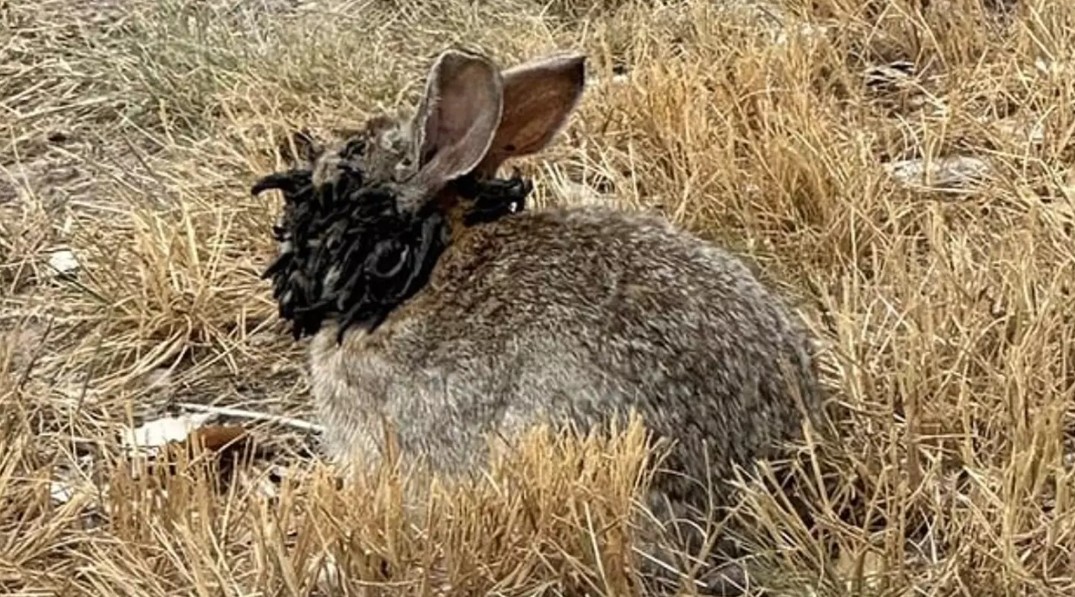
This situation is far more serious than just a bad hair day for bunnies. A rapidly advancing viral infection is causing cottontail rabbits to develop black, tentacle-like growths on their heads, prompting warnings to avoid these mutated creatures.
These “Frankenbunnies” have been observed multiple times in Fort Collins, Colorado. Local resident Susan Mansfield recounted seeing a rabbit with what she described as “black quills or black toothpicks sticking out all around his or her mouth.” She remarked, “I thought he would die off during the winter, but he didn’t.” Mansfield added, “He came back a second year, and it grew.”
Another individual described an infected rabbit as having “a scabies-like growth all over their face.” The condition commonly referred to as “bunny blight” is actually a disease known as cottontail papilloma virus, also called Shope papilloma virus, which results in tumor growth around the rabbits’ heads.
According to Pet MD, this virus is spread by parasites such as ticks and fleas, which transmit the illness through their bites. Kara Van Hoose, a spokesperson for Colorado Parks and Wildlife, stated, “Typically rabbits become infected in the warmer months of summer when transmitted by being bitten by insects like fleas and ticks.”

While the most recent sightings have occurred in Colorado, the disease appears most frequently in the Midwest. In 2013, a Minnesota resident garnered significant attention after uploading a video of a rabbit with tendril-like growths in their backyard, which they called the “Frankenstein” bunny. They drew comparisons to the mythical Jackalope—a legendary creature that was, in fact, a hoax perpetuated by humorists who attached antlers to taxidermied rabbits.
Given the increasing reports of CRPV, wildlife experts have advised the public against approaching or handling any affected animals. Fortunately, while the virus can spread among rabbits, it is not known to infect humans or pets and therefore poses no threat to public health, according to Colorado Parks and Wildlife.
Rabbits, however, often face a less fortunate outcome. Although some cases may resolve naturally, the “Medusa-like” protrusions can enlarge to such an extent that they hinder the infected animal’s ability to eat, leading to death by starvation. Furthermore, the disease is more severe in domestic rabbits than in their wild counterparts, with a significant concern that it could lead to squamous cell carcinoma, a serious and potentially fatal skin cancer. For this reason, experts recommend keeping wild rabbits separate from household pets.
If a rabbit does become infected, veterinarians are capable of surgically removing the harmful growths before they become malignant. Unfortunately, there is currently no known cure for CRPV.







